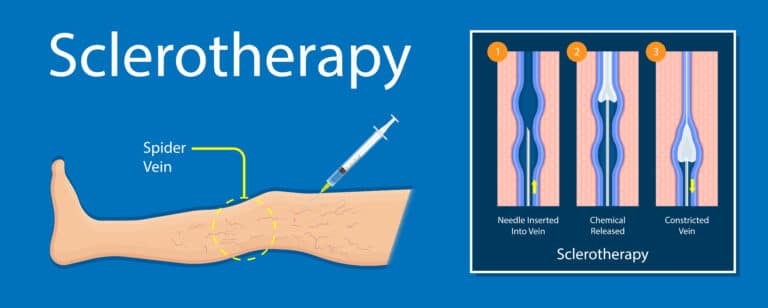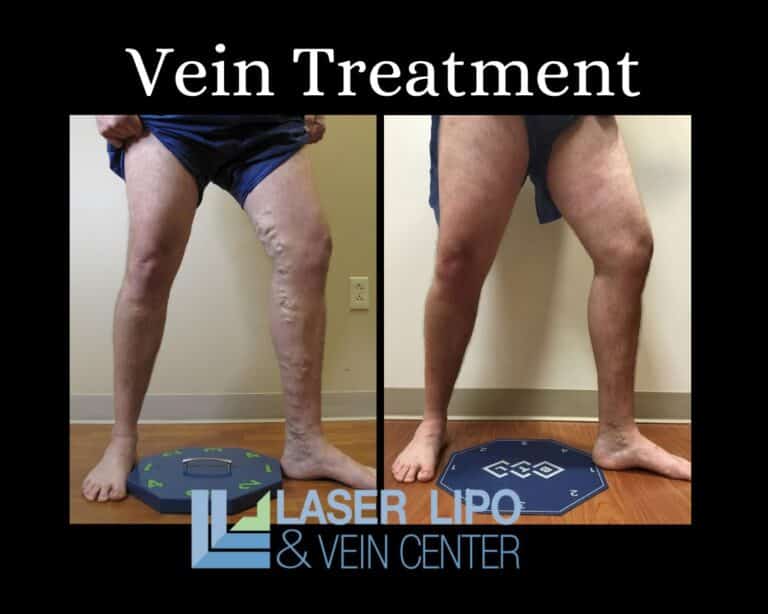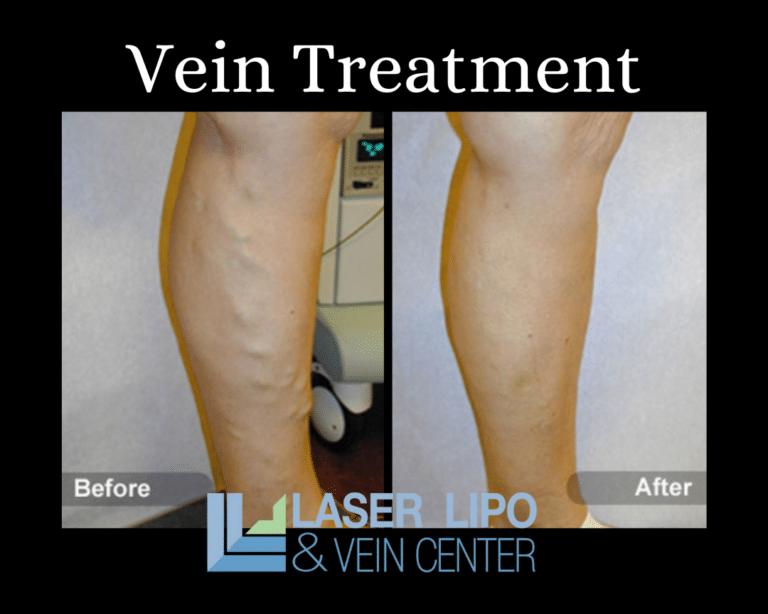Are you tired of hiding your legs because of unsightly spider veins? Look no further! Sclerotherapy vein treatment is the solution you’ve been waiting for. This minimally invasive procedure is designed to eliminate those pesky spider veins, allowing you to show off your legs again confidently. Whether you’re dealing with spider veins caused by genetics, hormones, or prolonged sitting or standing, sclerotherapy can effectively address them.
What is sclerotherapy vein treatment?
Sclerotherapy is a medical procedure used to treat spider veins and varicose veins. Spider veins are small, dilated blood vessels that appear close to the surface of the skin and often resemble spider webs or tree branches. Varicose veins, on the other hand, are larger, bulging veins that often cause discomfort and can be a sign of underlying venous insufficiency.
During sclerotherapy, a specially trained healthcare provider injects a solution directly into the affected veins. This solution irritates the lining of the veins, causing them to collapse and seal shut. Over time, the collapsed veins are reabsorbed by the body, and blood flow is redirected to healthier veins. The result is a significant reduction in the appearance of spider veins and varicose veins, leading to smoother, more attractive legs.

Types of vein conditions treated with sclerotherapy
Sclerotherapy is an effective treatment for a variety of vein conditions. It is commonly used to address spider veins and varicose veins, but it can also be used to treat other conditions, such as hemorrhoids and esophageal varices. Spider veins are typically smaller in size and closer to the surface of the skin, while varicose veins are larger, bulging veins that often cause discomfort and can be a sign of underlying venous insufficiency.
Benefits of sclerotherapy vein treatment
Sclerotherapy offers numerous benefits for individuals seeking to improve the appearance of their legs. One of the primary advantages of this treatment is its minimally invasive nature. Unlike surgical procedures, sclerotherapy does not require incisions or general anesthesia. Instead, it involves the injection of a solution directly into the affected veins, making it a relatively quick and painless process.
Another key benefit of sclerotherapy is its high success rate. In many cases, patients experience a significant reduction in the appearance of spider veins and varicose veins after just a few treatment sessions. The procedure is highly targeted, allowing healthcare providers to treat specific veins without affecting surrounding tissues. This precision ensures minimal scarring and a shorter recovery time compared to surgical interventions.
Furthermore, sclerotherapy is a cost-effective option for vein treatment. Since it is an outpatient procedure, there are no hospital stays or additional expenses typically associated with surgical interventions. The relatively low cost of sclerotherapy makes it accessible to a wide range of individuals seeking to improve the appearance of their legs.

Sclerotherapy procedure: what to expect
Before undergoing sclerotherapy, it is important to consult with a qualified healthcare provider who specializes in vein treatments. During the consultation, the provider will assess your veins, discuss your medical history, and determine if you are a suitable candidate for sclerotherapy. They will also explain the procedure in detail and address any concerns or questions you may have.
On the day of the procedure, you will be asked to wear loose-fitting clothing to allow easy access to the treatment area. The healthcare provider will cleanse your skin and may mark the veins being treated. A fine needle will be used to inject the sclerosing solution directly into the affected veins. The number of injections required will vary depending on the size and location of the veins being treated.
The injections may cause a slight tingling or burning sensation, but any discomfort is typically minimal and short-lived. The entire procedure usually takes about 30 minutes to an hour, depending on the number of veins being treated. After the injections, the healthcare provider may apply compression stockings or bandages to aid in the healing process.
How to prepare for sclerotherapy treatment
Prior to undergoing sclerotherapy, your healthcare provider will provide you with specific instructions to ensure a successful treatment session. These instructions may include:
- Avoiding certain medications, such as blood thinners, for a period of time before the procedure.
- Refraining from applying lotion or moisturizer to the legs on the day of the treatment.
- Wearing loose-fitting clothing to the appointment to allow easy access to the treatment area.
- Arranging for transportation to and from the procedure, as you may experience some mild discomfort or drowsiness afterward.
Following these pre-treatment instructions will help ensure optimal results and minimize the risk of complications.
Aftercare and recovery from sclerotherapy
After the sclerotherapy procedure, it is important to follow the healthcare provider’s post-treatment instructions to promote healing and maximize the results. These instructions may include:
- Wearing compression stockings or bandages as advised by the healthcare provider. Compression garments help maintain pressure on the treated veins, reducing the risk of blood pooling and promoting healing.
- Avoiding vigorous physical activity or strenuous exercise for a certain period of time to allow the treated veins to heal properly.
- Keeping the treated area clean and dry. Avoiding hot baths, saunas, or swimming pools for a few days after the procedure.
- Taking over-the-counter pain relievers, if necessary, to manage any discomfort or swelling.
It is important to note that everyone’s recovery process may vary, and it is crucial to follow the specific aftercare instructions provided by the healthcare provider.

Potential side effects of sclerotherapy
Like any medical procedure, sclerotherapy carries some potential risks and side effects. While complications are rare, it is important to be aware of them before deciding to undergo treatment. Some potential side effects and complications of sclerotherapy include:
- Discomfort or pain at the injection site: This is usually mild and resolves on its own within a few days.
- Bruising or discoloration: Bruising is a common side effect of sclerotherapy and may take a few weeks to fade.
- Itching or swelling: Some individuals may experience temporary itching or swelling around the treated veins.
- Skin discoloration: In rare cases, sclerotherapy can cause brown discoloration or small, superficial ulcers at the injection site. These usually resolve on their own over time.
- Allergic reactions: While rare, some individuals may have an allergic reaction to the sclerosing solution used during the procedure.
It is important to discuss potential risks and complications with your healthcare provider before undergoing sclerotherapy. They will be able to provide you with personalized information based on your specific situation.
How long does sclerotherapy last?
The longevity of the results achieved through sclerotherapy can vary depending on several factors, including the size and location of the treated veins, the severity of the underlying venous insufficiency, and individual lifestyle factors. In general, sclerotherapy is considered a long-lasting solution for spider veins and varicose veins.
While some individuals may experience complete resolution of their veins after a single treatment session, others may require multiple sessions to achieve optimal results. It is important to have realistic expectations and understand that maintenance treatments may be necessary to address any new veins that may develop over time.
Comparison of sclerotherapy with other vein treatments
Sclerotherapy is one of several treatment options available for spider veins and varicose veins. Other common treatments include laser therapy, radiofrequency ablation, and surgical interventions such as vein stripping or ligation. Each treatment option has its own advantages and considerations, and the most suitable approach will depend on the individual’s specific circumstances.
Compared to laser therapy, sclerotherapy is often preferred for treating larger veins or veins located deeper beneath the skin’s surface. Laser therapy is generally more effective for smaller spider veins near the surface of the skin. Radiofrequency ablation is another minimally invasive option that uses heat to close off veins. It is often recommended for larger varicose veins.
Surgical interventions, such as vein stripping or ligation, are typically reserved for more severe cases of venous insufficiency or when other treatments have been ineffective. These procedures involve the complete removal or tying off of the affected veins, requiring a longer recovery time compared to nonsurgical options.
It is essential to consult with a qualified healthcare provider who specializes in vein treatments to determine the most appropriate option for your specific condition.
Finding a qualified sclerotherapy specialist
When it comes to vein treatments, it is crucial to seek the expertise of a qualified healthcare provider specializing in this field. A skilled sclerotherapy specialist will have the necessary training and experience to perform the procedure safely and effectively.
To find a qualified specialist, consider the following:
- Ask for recommendations from your primary care physician or other trusted healthcare professionals.
- Research and read reviews of specialists in your area.
- Look for certifications or affiliations with professional organizations such as the American Board of Venous and Lymphatic Medicine.
During your initial consultation, don’t hesitate to ask questions about the specialist’s experience, success rates, and any potential risks or complications associated with the procedure. Building a rapport with your healthcare provider will help ensure a positive treatment experience and optimal results.

Conclusion
Sclerotherapy vein treatment is a highly effective and minimally invasive procedure for eliminating spider veins and varicose veins. By collapsing and sealing off the affected veins, sclerotherapy can significantly improve the appearance of your legs and boost your confidence. With its high success rate, minimal downtime, and cost-effectiveness, sclerotherapy offers a convenient and accessible solution for individuals seeking to address vein-related concerns.
If you’re tired of hiding your legs and want to regain your confidence, schedule a consultation with Dr. Wright and his team at St. Louis Laser Lipo & Vein Center today. Say goodbye to the embarrassment and discomfort of spider veins and hello to beautiful, smooth legs. With sclerotherapy, you can confidently flaunt your legs in your favorite skirts, shorts, and dresses. Don’t let spider veins hold you back any longer – take the first step towards beautiful, vein-free legs and give us a call.

